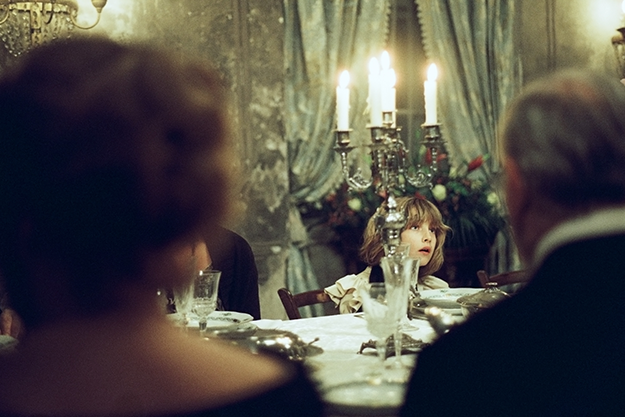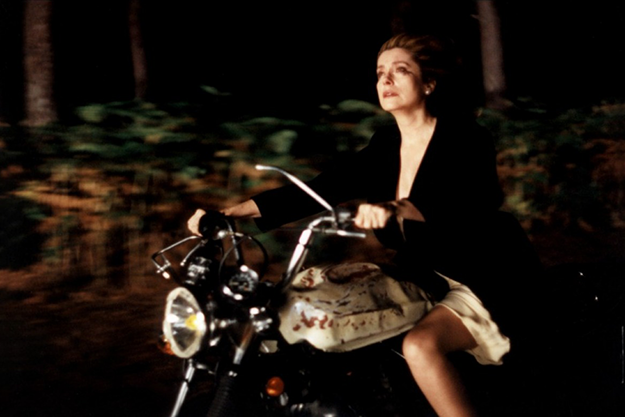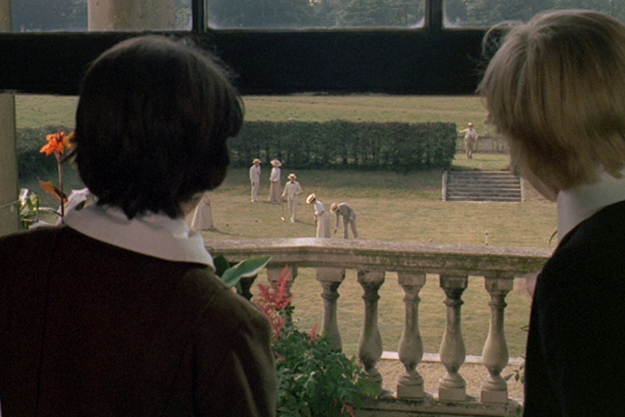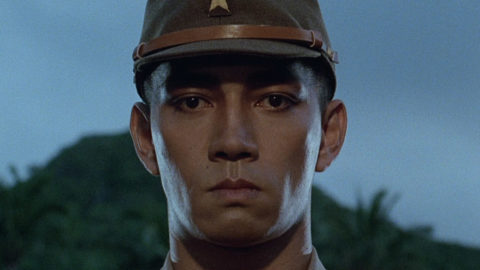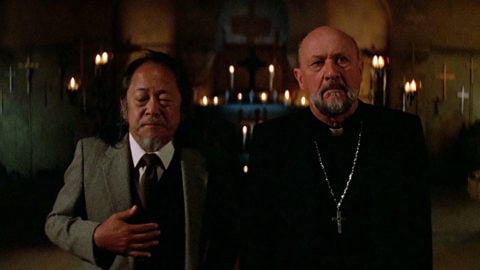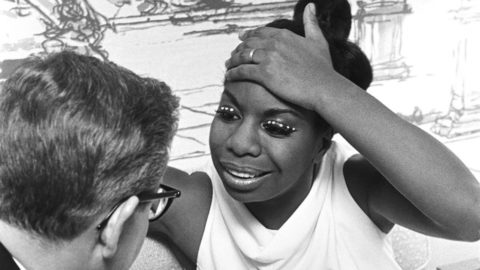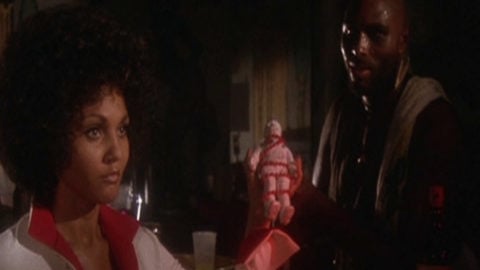Deep Cuts: Scott Walker
Some reading music: listen to this week’s special mix below. (See the full track listing.)
Childhood of a Leader
To gain an understanding of the impact of Scott Walker’s music, a brief rundown of his acolytes is telling: his famous devotees include David Bowie, Brian Eno, Jarvis Cocker of Pulp, Johnny Marr of The Smiths, Radiohead, and Nick Cave. Drawing little from his contemporaries, Walker’s few influences make fractured appearances in his solo work, and hardly filter into his overall sound. His primary influence, which he has often cited, is not music but the cinema, his “first love” and the reason why he continues to “think in images” when he writes music. Walker’s explicit references to specific films within his songs are numerous, with “The Seventh Seal” on Scott 4 being the most outstanding. There is even a CD called Scott on Screen that was released in 2003 as part of the 5 Easy Pieces box set that compiles his film-themed songs with the many singles that he cut for various soundtracks. There are 21 tracks on the CD and there could easily be more.
Oddly enough, Walker has only scored two films on his own, Leos Carax’s Pola X (1999) and now Brady Corbet’s Childhood of a Leader, the soundtrack of which comes out today, released through 4AD records (a few weeks after the movie’s opening on July 22). Though he is still in his twenties, Corbet, like Walker, is massively ambitious when it comes to his craft and approaches his work with a voracious knowledge of film in tow. Perhaps because Walker is the elder and more accomplished artist, his score overwhelms Corbet’s many achievements, frankly surpassing the film throughout. More directors should commission Walker to score their films, and hopefully after this release, a few more will take the bait.
For all of Walker’s compositions as a solo artist, the lyric is vital to his songwriting process, which might make one question the prospect of an extensive instrumental work such as this new score. Ordinarily, the melody, backing music and finally the vocals fall in line behind the written lyrics whenever Walker records, making the lyrics the centerpiece of each song, with the vocals precisely situated in the middle of the audio mix. Pola X was both Walker’s first full soundtrack and a rare occurrence of one of his compositions without lyrics, save for the brief intro “The Time Is Out of Joint” that opens the film. Without words his music has the potential of sounding rootless, but somehow this absence is reconciled by the authority of Pola X‘s narrative, along with the fact that all of Walker’s purely instrumental music since differs from his primary output as a singer/composer.
Pola X
Recorded between his solo albums Tilt (1995) and The Drift (2006) in time with Leos Carax’s dilated schedule, Walker’s soundtrack is a compilation of self-penned orchestral tracks and his curation of music by other artists such as Sonic Youth, Fairuz, and Bill Callahan (aka Smog). Based on the Herman Melville novel Pierre; or, The Ambiguities, the film follows the wealthy and successful protagonist as he plunges willingly into a life of poverty, obscurity, and incest, in search of a gritty and ostensibly “real” experience that will reinvigorate his writing. Neither his publisher nor his fans are pleased with his retreat from the mainstream, expressing the unbridled disgust of a disappointed audience. As a formerly popular singer whose own approach to songwriting has also grown wayward in later years, Walker explained to Benjamin Ratliff in 2014: “Most of my [late] songs are about frustration and failure. Sometimes if I have a romantic lead line, I think to myself, people are really going to like this . . . I’m not interested in that.” Walker is interested instead in “big blocks of sound, raw and stark”—exemplified in the warehouse scenes in Pola X, in which a large group of black-turtlenecked musicians including Bill Callahan and members of Rammstein atonally shred and bang on everything including a kitchen sink while a sullen, Kinski-ish actor plays their revolutionary/terrorist conductor. https://youtu.be/80xOJ2I2oVc
Some of the traditionally orchestral cues on the soundtrack are calm and pastoral, accompanying Pierre during the first section of the film as he loafs about in the meadow, dressed in cream and white, with his beautiful fiancée, his handsome best friend, and his overly affectionate mother (played by Catherine Deneuve). Following Pierre as he tromps through the woods, this time shaded by the dark blue hues of day-for-night photography, “The Darkest Forest” presents a lovely melody cloaked in an ominous minor key. Such moving instrumentals prove that Walker is still adept at pulling sustained melodies out of his back pocket in order to furnish a scene with emotional bombast, though he is more likely to do so for a commissioned work than for his solo projects, which hold a separate and unique appeal.
Thirty years before Pola X, Walker released his first soundtrack single, “The Rope and the Colt” (1969), written by André Hossein (music) and Hal Shaper (lyrics) for the Dario Argento–scripted Euro-Western of the same title, complete with a snazzy horn section that could have held court in the background of a Monument Valley production.
The Go-Between
“I Still See You” was next, recorded for Joseph Losey’s The Go-Between (1971), composed by Michel Legrand with lyrics again by Hal Shaper. Walker was reportedly drunk in the studio, and his alternately delicate and sonorous performance on the single fails to level with the band’s overwhelming verve and spot-on timing. But inebriated or not, Walker’s casual delivery was still apt for this Julie Christie weepie.
Long after his so-called “wilderness years” of the 1970s and deep into the creative comeback occasioned by the Walker Brothers’ album Nite Flights (1978), Walker recorded his next MOR soundtrack single in 1993 for Toxic Affair, Philomène Esposito’s goofy Christmas comedy starring Isabelle Adjani. The Serbian guitarist Goran Bregovic composed and played on the track (titled “Man from Reno”) while Walker sang sufficiently over the corny production. Predictably, the seemingly thrown-together music video for the single is an audiovisual model of apathy.
After “Man from Reno” he recorded “I Threw It All Away” for John Hillcoat’s To Have and to Hold (1996), which Walker recorded as a favor to Nick Cave, who compiled the soundtrack. Provided with only two choices, Walker begrudgingly opted to cover Bob Dylan over Sinatra, and sang the ballad with a lazy croon, attaining the lounge lizard effect that Cave was undoubtedly hoping for. Some songs are perfectly suited for Walker’s honeyed baritone, which makes it all the more puzzling why Michael Apted decided to drop his performance of David Arnold’s (music) and Don Black’s (lyric) “Only Myself to Blame” from the closing credit roll of the James Bond film The World is Not Enough (1999). Apted chose instead to include a techno remix of the standard Bond theme and for that transgression, he has only himself to blame. For an imagined alternate, I’ve always thought that Walker’s performance of “Best of Both Worlds” from Scott 2 (with a change of lyrics) sounds like the remarkable Bond song that never was.
In between the releases of his solo albums Tilt, The Drift, and Bisch Bosch (2012) Walker produced some music for other musicians, wrote two excellent songs for Ute Lemper and composed a few pieces as accompaniment for dance performances. And Who Shall Go to the Ball? And What Shall Go to the Ball? was written for the CandoCo Dance Company of disabled and non-disabled dancers, and was released in 2007 by Walker’s current label 4AD. Extended moments of near-silence, quick jolts of feedback and sudden pile-ons of disparate sounds make this composition an avant-garde work, but when the strings begin to buzz and swarm, mounting an offensive against a barrage of piercing notes, the music begins to veer toward the accessible. Pieces of And Who Shall Go to the Ball resemble Walker’s latest soundtrack for Childhood of a Leader, which features a 62-piece orchestra, including 47 string instruments alone.
If the orchestral elements of the Pola X soundtrack reflect Walker’s admiration for romantic film composers like Michel Legrand, Childhood of a Leader screams out his affinity for Bernard Herrmann. Tense and scary, the piccolo has never sounded more terrifying than it does under Scott Walker’s direction, with the aid of his regular producer Peter Walsh and his conductor Mark Warman. Tracking the tantrums of an American diplomat’s brutal child as the father takes part in the 1919 Paris Peace Conference, the film and its score are both downright unnerving. Precisely de-tuned hordes of strings attack the film with Psycho-like stabs, careen wildly or alternately melt into a frightening morass. In other moments, such as during the cue “Village Walk,” the strings whittle down to a lone pizzicato, personifying the figure of a tiptoeing, untrustworthy child. When the various instruments play off each other in a cohesive manner, the soundtrack is Walker’s most straightforward work in decades, which is to say that it is still fantastically off-kilter. Both Walsh and Warman closed this year’s Rotterdam film festival with a grand live performance of the soundtrack for a rapt audience, fueling the demand that Walker continue to compose for film.
Track List:
1. The Darkest Forest – Pola X
2. The Electrician – Nite Flights
3. Prologue – ‘Til the Band Comes In
4. Plastic Palace People – Scott 2
5. Montague Terrace (In Blue) – Scott
6. The Seventh Seal – Scott 4
7. The Rope and the Colt
8. The Sun Ain’t Gonna Shine Anymore
9. Track Three – Climate of Hunter
10) Shutout – Nite Flights
11. Epizootics! – Bisch Bosch
12. The Church of the Apostles – Pola X
13. Farmer in the City (Remembering Pasolini) – Tilt
14. Light – Pola X
15. It’s Raining Today – Scott 3
16. 30th Century Man – Scott 3
Margaret Barton-Fumo is the editor of a forthcoming book on Paul Verhoeven and a longtime contributor to FILM COMMENT.



